THCA Biosynthesis: How Plants Create This Molecular Structure
Cannabis plants represent one of nature's most sophisticated biochemical laboratories, synthesizing THCA through a complex enzymatic pathway that transforms simple molecular precursors into intricate cannabinoid structures. This remarkable process, known as the THCA biosynthesis pathway, showcases the elegant precision of plant metabolism and reveals how cannabis achieves its unique chemical profile.
The cannabis biosynthetic pathway operates through a series of carefully orchestrated enzymatic reactions, each step precisely controlled by genetic programming and environmental influences. Understanding this process not only illuminates the fundamental mechanisms of plant biochemistry but also provides crucial insights for cultivation optimization, quality enhancement, and therapeutic applications.
At its core, THCA enzyme synthesis involves the coordinated action of multiple specialized enzymes, each contributing to the step-by-step construction of the final cannabinoid molecule. This intricate dance of molecular transformation begins with simple building blocks and culminates in the production of tetrahydrocannabinolic acid, the precursor to the more widely known THC.
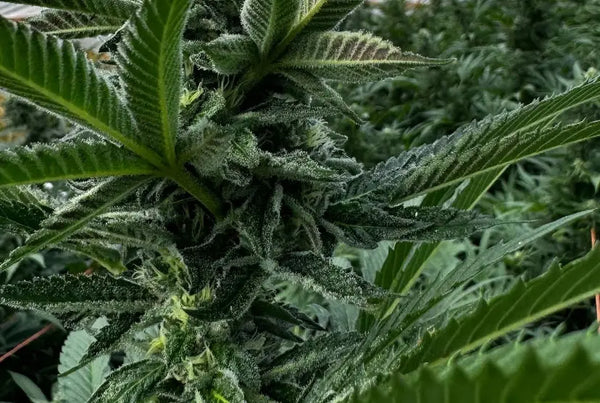
The Foundation of Cannabinoid Chemistry
Understanding Plant Metabolic Architecture
Plant metabolic pathways represent millions of years of evolutionary refinement, creating highly efficient systems for producing specialized compounds. In cannabis, these pathways have evolved to produce a unique array of cannabinoids, with THCA serving as one of the primary end products of this sophisticated biosynthetic machinery.
The cannabis plant chemistry begins with primary metabolites—simple molecules that all plants produce for basic cellular functions. These include amino acids, sugars, and lipids that serve as the fundamental building blocks for more complex secondary metabolites. Cannabis has evolved specialized enzymes that can take these common precursors and transform them into the distinctive cannabinoid structures that define the plant's chemical signature.
Cannabinoid biosynthesis occurs primarily in specialized structures called glandular trichomes, microscopic factories that cover the surface of cannabis flowers and leaves. These trichomes concentrate the enzymatic machinery necessary for cannabinoid production, creating microenvironments optimized for the complex chemical transformations required.
The Starting Materials: Building Blocks of THCA
The THCA biosynthesis pathway begins with two essential precursor molecules: olivetolic acid and geranyl diphosphate. These seemingly simple compounds represent the convergence of two major metabolic streams within the plant—the phenylpropanoid pathway and the isoprenoid pathway.
Olivetolic acid emerges from a specialized branch of fatty acid metabolism, where the plant creates polyketide chains through repeated condensation reactions. This process involves the enzyme olivetol synthase, which catalyzes the cyclization and aromatization reactions necessary to create the phenolic backbone that will eventually become part of the THCA molecule.
Geranyl diphosphate, on the other hand, originates from the isoprenoid pathway, one of the most ancient and conserved metabolic routes in biology. This pathway produces the terpene precursors that contribute to cannabis's distinctive aroma profile while also providing the isoprenoid unit essential for cannabinoid biosynthesis.
The Enzymatic Orchestra: Key Players in THCA Synthesis
Primary Enzymes in the Biosynthetic Cascade
The transformation of simple precursors into THCA requires the coordinated action of several specialized enzymes, each with a specific role in the molecular biosynthesis process. Understanding these enzymes provides insight into how plants achieve such precise control over cannabinoid production.
Olivetol synthase serves as the entry point into cannabinoid biosynthesis, catalyzing the formation of olivetolic acid from hexanoyl-CoA and malonyl-CoA precursors. This enzyme demonstrates remarkable specificity, ensuring that the phenolic backbone maintains the exact structural requirements for subsequent cannabinoid formation. The enzyme's active site architecture creates a precise molecular environment where the polyketide chain can undergo cyclization and aromatization in a controlled manner.
GOT (Geranylpyrophosphate:olivetolate geranyltransferase) represents the crucial convergence point where the phenolic and isoprenoid pathways merge. This enzyme catalyzes the prenylation reaction that combines olivetolic acid with geranyl diphosphate to form cannabigerolic acid (CBGA), the central intermediate in cannabinoid biosynthesis. The specificity of this enzyme determines the regioselectivity of the prenylation reaction, ensuring that the geranyl group attaches at the correct position on the olivetolic acid backbone.
The THCA synthase enzyme catalyzes the final and most structurally complex step in the pathway, converting CBGA into THCA through an oxidative cyclization reaction. This enzyme demonstrates exceptional stereospecificity, creating the precise three-dimensional structure characteristic of THCA. The reaction mechanism involves the formation of a phenolic radical intermediate, followed by intramolecular cyclization to create the tricyclic cannabinoid structure.
Supporting Enzymatic Systems
Beyond the primary biosynthetic enzymes, THCA enzyme synthesis requires numerous supporting enzymes that maintain cofactor balance, provide reducing equivalents, and ensure optimal reaction conditions. These include flavin adenine dinucleotide (FAD)-dependent oxidases, NADPH-generating enzymes, and various housekeeping proteins that maintain cellular homeostasis.
Cytochrome P450 enzymes play supporting roles in cannabinoid metabolism, potentially involved in the synthesis of precursors and the modification of cannabinoid structures. These versatile enzymes can catalyze hydroxylation, epoxidation, and other oxidative transformations that contribute to the chemical diversity observed in cannabis plant chemistry.
Molecular Mechanisms: The Chemistry Behind THCA Formation
Enzyme-Substrate Interactions and Catalytic Precision
The THCA synthase enzyme represents one of the most sophisticated catalysts in plant biochemistry, capable of orchestrating a complex multi-step reaction with remarkable precision. The enzyme's catalytic mechanism involves the creation of a phenolic radical through single-electron oxidation, followed by intramolecular cyclization to form the characteristic cannabinoid ring system.
Structural studies of THCA synthase reveal a highly organized active site that positions the CBGA substrate in the exact orientation required for successful cyclization. The enzyme utilizes FAD as a cofactor, which serves as the electron acceptor during the oxidative cyclization process. This cofactor requirement links THCA enzyme synthesis to the cell's overall redox balance, allowing the plant to regulate cannabinoid production in response to metabolic conditions.
The reaction mechanism proceeds through several intermediates, each stabilized by specific interactions with amino acid residues in the enzyme's active site. These interactions ensure that the reaction proceeds efficiently while minimizing the formation of unwanted side products. The stereospecific nature of the reaction reflects the precise three-dimensional arrangement of catalytic residues within the enzyme's active site.
Product Specificity and Structural Determinants
The ability of THCA synthase to produce THCA specifically, rather than other possible cannabinoid products, depends on subtle structural features within the enzyme's active site. Comparative studies with related enzymes, such as CBDA synthase, reveal how small differences in amino acid sequence can dramatically alter product specificity in cannabinoid biosynthesis.
The enzyme's specificity also extends to substrate recognition, with THCA synthase showing strong preference for CBGA over other potential prenylated phenolic substrates. This specificity ensures that the cannabis biosynthetic pathway channels metabolic flux toward THCA production rather than alternative cannabinoid products.
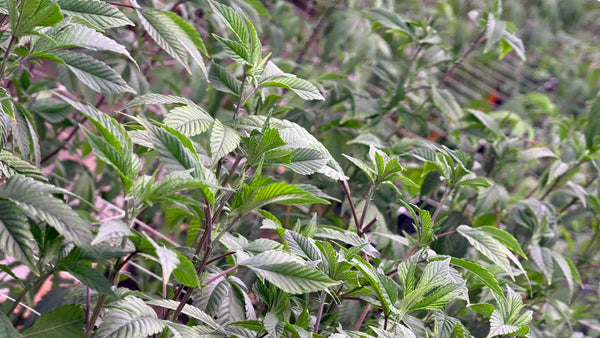
Genetic Regulation: Controlling the Biosynthetic Program
Gene Expression Patterns and Developmental Control
The genes encoding enzymes in the THCA biosynthesis pathway are subject to complex regulatory mechanisms that coordinate cannabinoid production with plant development and environmental conditions. These regulatory systems ensure that cannabinoid synthesis occurs at the appropriate time and in the appropriate tissues to maximize the plant's adaptive advantage.
THCA synthase enzyme gene expression typically increases dramatically during flower development, coinciding with the formation of glandular trichomes where cannabinoid synthesis occurs. This developmental timing reflects the plant's strategy of concentrating defensive compounds in reproductive tissues, where they can provide protection during the vulnerable flowering period.
Transcriptional regulation involves multiple signaling pathways, including those responsive to light quality, photoperiod, and various stress conditions. The integration of these signals allows the plant to fine-tune cannabinoid biosynthesis in response to changing environmental conditions, optimizing both metabolic efficiency and adaptive advantage.
Strain-Specific Variations and Genetic Diversity
Different cannabis strains exhibit remarkable variation in their cannabinoid profiles, largely due to genetic differences in the enzymes involved in the cannabis biosynthetic pathway. These variations can affect enzyme expression levels, substrate specificities, and catalytic efficiencies, leading to the diverse chemical phenotypes observed across cannabis varieties.
Polymorphisms in THCA synthase enzyme genes contribute significantly to strain-specific differences in THCA production. Some variants show altered kinetic properties, while others may have modified tissue-specific expression patterns. Understanding these genetic differences provides insights into how breeding programs can optimize cannabinoid production for specific applications.
Environmental Influences on THCA Biosynthesis
Light Quality and Photosynthetic Regulation
Environmental factors profoundly influence THCA enzyme synthesis through multiple mechanisms that link cannabinoid production to the plant's overall physiological state. Light quality represents one of the most significant environmental variables affecting cannabinoid biosynthesis, with specific wavelengths triggering distinct metabolic responses.
Blue light exposure has been shown to enhance the expression of genes encoding enzymes in the THCA biosynthesis pathway, potentially through the activation of photoreceptor-mediated signaling cascades. This response likely reflects the plant's adaptation to optimize defensive compound production under high light conditions, where photosynthetic stress might increase the need for protective metabolites.
UV radiation exposure can dramatically increase cannabinoid production, possibly as part of the plant's response to photodamage stress. The UV response involves the activation of stress-responsive transcription factors that can upregulate cannabinoid biosynthesis genes while simultaneously enhancing the production of other protective compounds.
Temperature Effects and Metabolic Optimization
Temperature fluctuations significantly impact molecular biosynthesis in cannabis, affecting both enzyme activity and gene expression patterns. Moderate temperature stress can enhance cannabinoid production by activating stress-responsive pathways, while extreme temperatures may disrupt the delicate enzymatic processes required for THCA synthesis.
The temperature dependence of THCA synthase enzyme activity means that cultivation conditions must be carefully optimized to maintain peak enzymatic efficiency. Temperature fluctuations can also affect the stability of the enzyme cofactors and the efficiency of electron transfer reactions essential for the oxidative cyclization process.
Nutrient Availability and Metabolic Flux
The availability of nutrients, particularly nitrogen and phosphorus, significantly influences plant metabolic pathways involved in cannabinoid production. Nitrogen limitation can redirect metabolic flux away from primary metabolism toward secondary metabolite production, potentially enhancing THCA biosynthesis pathway activity.
Mineral nutrients also play crucial roles as enzyme cofactors and in maintaining the cellular conditions necessary for optimal enzyme function. Magnesium, zinc, and iron deficiencies can impair cannabinoid biosynthesis by disrupting cofactor availability or altering the redox balance required for optimal enzyme activity.
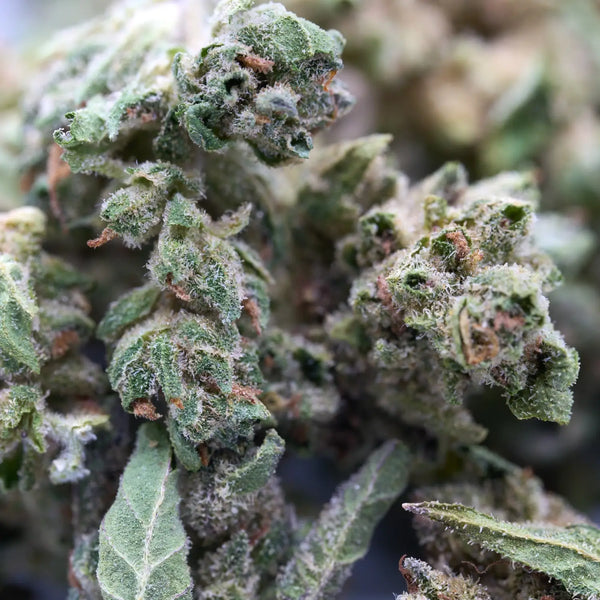
Tissue Localization and Cellular Organization
Trichome Specialization and Metabolic Compartmentalization
The spatial organization of THCA enzyme synthesis within cannabis plants reflects a sophisticated strategy for concentrating defensive compounds where they can provide maximum protection. Glandular trichomes serve as specialized metabolic factories, concentrating the enzymatic machinery necessary for cannabinoid production in discrete cellular compartments.
Within trichomes, the THCA biosynthesis pathway enzymes are localized to specific subcellular compartments that optimize reaction efficiency while preventing interference with essential cellular processes. This compartmentalization allows for high local concentrations of substrates and products while maintaining overall cellular homeostasis.
The development of trichomes follows a precise temporal program that coordinates structural differentiation with metabolic specialization. As trichomes mature, they progressively accumulate the enzymes and substrates necessary for cannabinoid biosynthesis, reaching peak activity during the flowering period when defensive compounds are most needed.
Transport Mechanisms and Storage Systems
The movement of precursors and products within the cannabis biosynthetic pathway requires sophisticated transport mechanisms that can move molecules between different cellular compartments and tissues. Specialized transporters facilitate the movement of olivetolic acid, geranyl diphosphate, and intermediate compounds to sites of active biosynthesis.
Storage mechanisms ensure that synthesized THCA is maintained in stable form until needed. The acidic environment within storage compartments helps stabilize THCA against decarboxylation, preserving the compound's integrity throughout the plant's life cycle. These storage systems also prevent the accumulation of potentially harmful concentrations of bioactive compounds in metabolically active tissues.
Advanced Metabolic Engineering Strategies
Pathway Optimization and Enhancement Approaches
Modern biotechnology offers numerous opportunities for optimizing the THCA biosynthesis pathway through targeted genetic modifications that enhance enzyme expression, improve catalytic efficiency, or redirect metabolic flux toward desired products. These approaches require detailed understanding of pathway regulation and enzyme kinetics to achieve meaningful improvements in cannabinoid production.
THCA synthase enzyme engineering represents a particularly promising target for improvement efforts. Structure-based design approaches can identify specific amino acid modifications that might enhance enzyme stability, improve substrate affinity, or increase catalytic turnover rates. These modifications could significantly improve the efficiency of THCA enzyme synthesis in optimized cultivation systems.
Metabolic flux analysis provides quantitative insights into pathway bottlenecks and regulatory control points that limit cannabinoid production. By identifying these constraints, researchers can develop targeted interventions that remove limitations and enhance overall pathway efficiency. Such approaches might involve overexpressing rate-limiting enzymes, enhancing precursor availability, or optimizing cofactor regeneration systems.
Quality Enhancement and Precision Control
Beyond simply increasing THCA production, metabolic engineering approaches can enhance the quality and consistency of cannabinoid biosynthesis by reducing pathway variability and improving product purity. These objectives require sophisticated understanding of the factors that influence pathway regulation and product distribution.
Precision fermentation systems offer the potential to produce cannabinoids through heterologous expression in microbial hosts, providing unprecedented control over production conditions and product quality. These systems can eliminate many of the variables associated with plant-based production while enabling the use of optimized enzyme variants and controlled precursor supply.

Future Directions in THCA Biosynthesis Research
Emerging Technologies and Research Frontiers
The field of cannabis plant chemistry continues to evolve rapidly, driven by advances in analytical chemistry, genomics, and systems biology that provide new insights into the complexity of cannabinoid biosynthesis. These technological advances are revealing previously unknown aspects of pathway regulation and opening new opportunities for optimization and enhancement.
Single-cell genomics approaches are beginning to reveal the cellular heterogeneity within cannabis tissues, showing how different cells contribute to overall cannabinoid biosynthesis. This cellular-level understanding provides new targets for optimization efforts and suggests strategies for enhancing production efficiency through tissue-specific modifications.
Synthetic biology approaches offer the potential to redesign plant metabolic pathways for enhanced performance, sustainability, and product quality. These approaches might involve the development of artificial biosynthetic circuits that bypass natural regulatory constraints or the creation of novel enzyme variants with improved properties.
Integration with Sustainable Production Systems
Future developments in THCA biosynthesis pathway optimization must consider sustainability and environmental impact alongside production efficiency. This integration requires understanding how biosynthetic modifications affect overall plant physiology and stress tolerance, ensuring that enhanced cannabinoid production doesn't compromise plant health or environmental adaptability.
Precision agriculture technologies can optimize environmental conditions for molecular biosynthesis while minimizing resource consumption and environmental impact. These systems integrate real-time monitoring with automated control systems to maintain optimal conditions for cannabinoid production throughout the cultivation cycle.
Frequently Asked Questions
What is the THCA biosynthesis pathway?
The THCA biosynthesis pathway is a sophisticated enzymatic cascade that converts simple precursor molecules into tetrahydrocannabinolic acid (THCA) within cannabis plants. This pathway involves multiple specialized enzymes working in sequence to transform olivetolic acid and geranyl diphosphate into the complex cannabinoid structure. The process occurs primarily in glandular trichomes and represents one of the most elegant examples of plant secondary metabolism.
How does THCA synthase enzyme work?
The THCA synthase enzyme catalyzes the final step in THCA biosynthesis, converting cannabigerolic acid (CBGA) into THCA through an oxidative cyclization reaction. The enzyme uses FAD as a cofactor to create a phenolic radical intermediate, which then undergoes intramolecular cyclization to form the characteristic tricyclic cannabinoid structure. This process requires precise spatial organization within the enzyme's active site to ensure proper product formation.
What factors influence cannabinoid biosynthesis in plants?
Cannabinoid biosynthesis is influenced by numerous factors including genetic background, environmental conditions, developmental stage, and stress responses. Light quality and intensity, temperature fluctuations, nutrient availability, and various biotic and abiotic stresses can all significantly impact the expression of biosynthetic genes and the activity of key enzymes. Understanding these influences is crucial for optimizing cultivation conditions.
Where does THCA synthesis occur in cannabis plants?
THCA enzyme synthesis occurs primarily in glandular trichomes, specialized structures that cover the surfaces of cannabis flowers and leaves. These microscopic factories concentrate the enzymatic machinery necessary for cannabinoid production, creating optimal microenvironments for the complex chemical transformations required. The spatial organization within trichomes ensures efficient substrate availability and product accumulation.
Can THCA biosynthesis be enhanced through genetic modification?
Yes, molecular biosynthesis pathways can potentially be enhanced through various genetic modification approaches including enzyme overexpression, pathway optimization, and metabolic engineering. These strategies might involve increasing the expression of rate-limiting enzymes, improving enzyme efficiency through protein engineering, or optimizing the supply of precursor molecules. However, such modifications require careful consideration of overall plant physiology and metabolic balance.
How do different cannabis strains vary in their THCA production?
Different cannabis strains exhibit significant variation in cannabis biosynthetic pathway activity due to genetic differences in enzyme expression, substrate availability, and regulatory control mechanisms. These variations can affect THCA production levels, timing of synthesis, and tissue-specific accumulation patterns. Understanding strain-specific differences provides insights for breeding programs and cultivation optimization.
What role do environmental conditions play in THCA synthesis?
Environmental conditions profoundly influence plant metabolic pathways involved in THCA production through effects on gene expression, enzyme activity, and metabolic flux distribution. Factors such as light spectrum, temperature, humidity, and nutrient availability can all impact the efficiency of cannabinoid biosynthesis. Optimal cultivation practices require careful control of these environmental variables to maximize production while maintaining plant health.
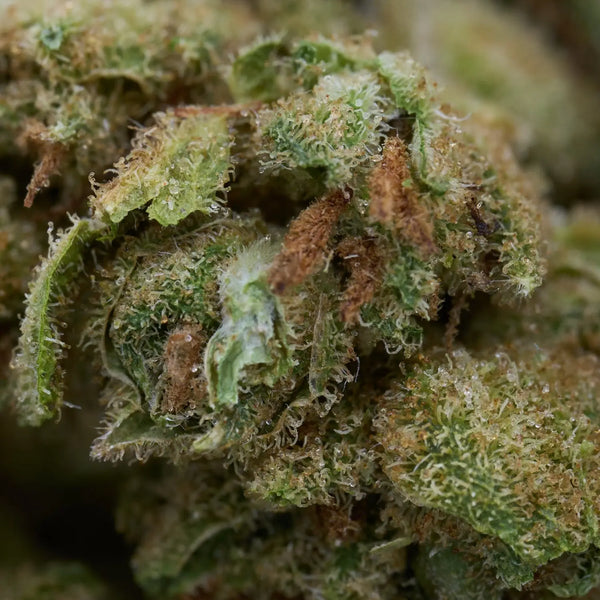
Conclusion
The THCA biosynthesis pathway represents a masterpiece of plant metabolism, demonstrating how simple molecular building blocks can be transformed into complex bioactive compounds through precise enzymatic control. This sophisticated biochemical system showcases the evolutionary refinement of plant metabolic pathways and highlights the remarkable chemical diversity that plants can achieve through specialized secondary metabolism.
Understanding the intricacies of cannabis biosynthetic pathway provides crucial insights for optimizing cultivation practices, enhancing product quality, and developing new applications for cannabis-derived compounds. The coordinated action of multiple enzymes, each precisely regulated by genetic and environmental factors, creates a system capable of producing consistent, high-quality cannabinoids under appropriate conditions.
The THCA synthase enzyme and supporting biosynthetic machinery represent targets for future optimization efforts that could enhance production efficiency while maintaining the natural complexity and quality of cannabis-derived products. As our understanding of molecular biosynthesis continues to advance, new opportunities will emerge for improving both the quantity and quality of cannabinoid production.
The future of cannabinoid biosynthesis research lies in integrating molecular-level understanding with practical cultivation applications, creating systems that optimize production while respecting the sophisticated natural processes that have evolved over millions of years. This integration promises to unlock the full potential of cannabis biochemistry while maintaining the integrity and sustainability of production systems.
For those interested in experiencing the results of these sophisticated biosynthetic processes, premium THCA products showcase the remarkable complexity and quality that nature's enzymatic machinery can achieve through the elegant chemistry of cannabis plant chemistry.

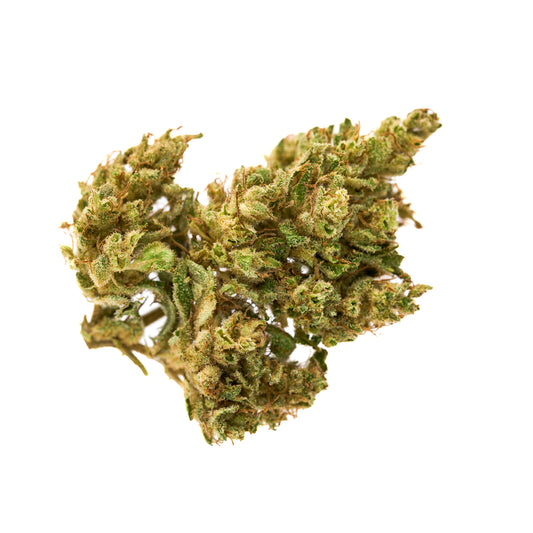
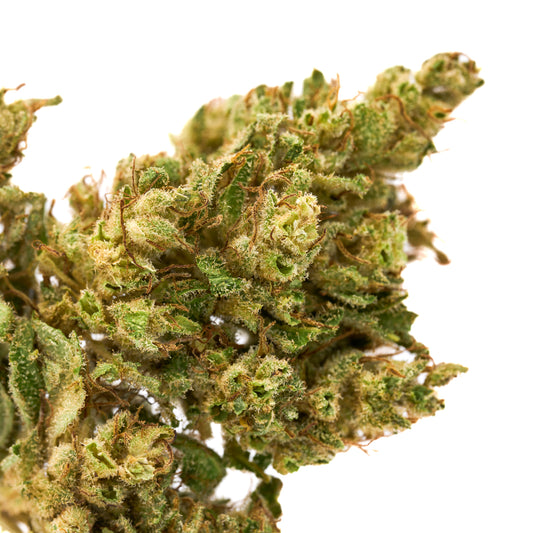

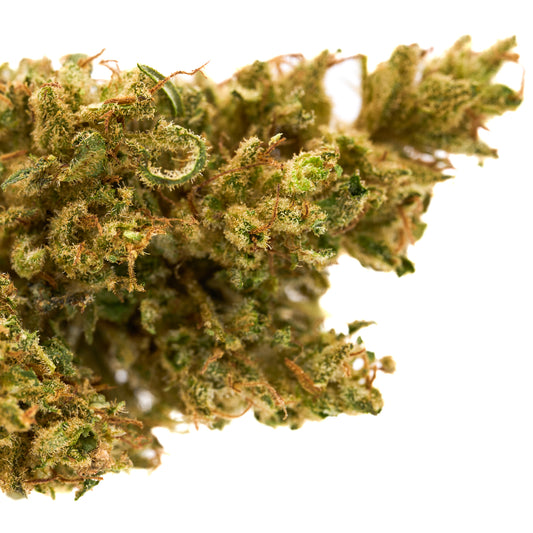

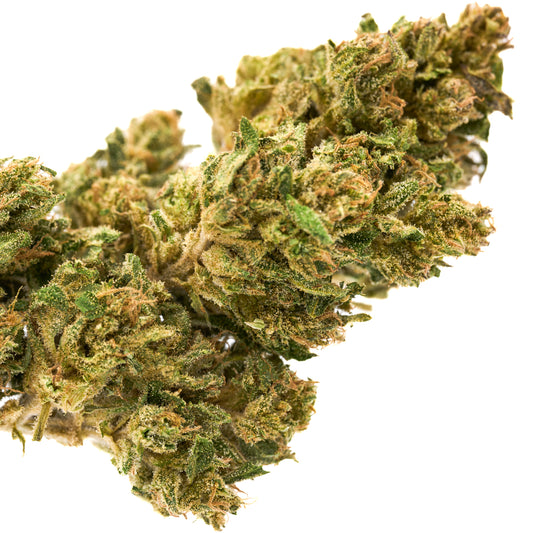



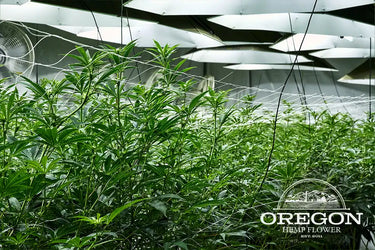
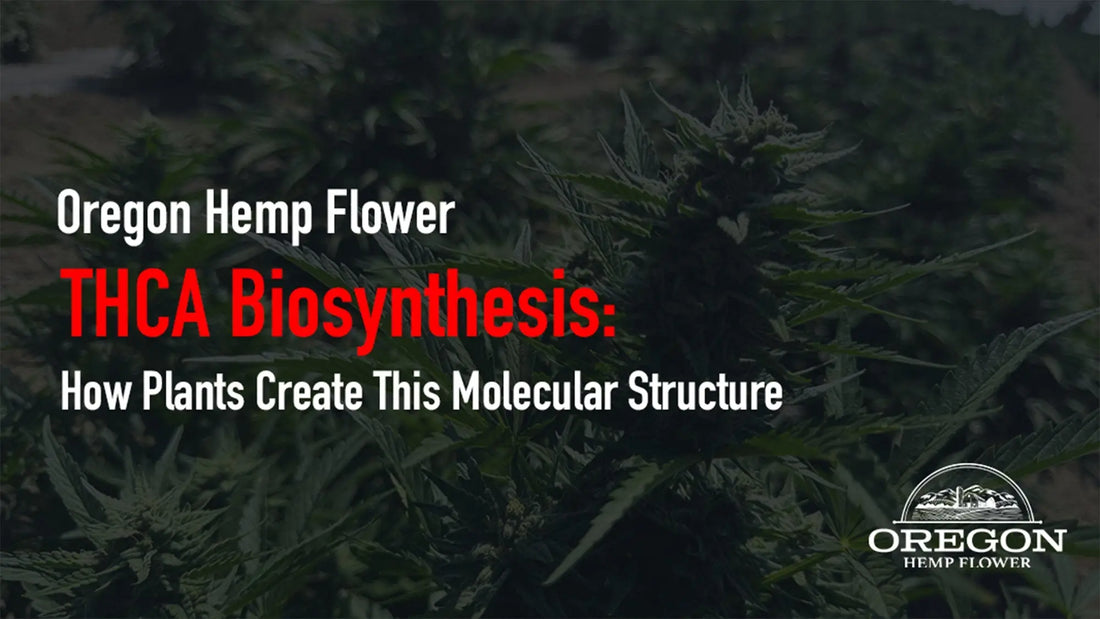
Leave a comment
Please note, comments need to be approved before they are published.